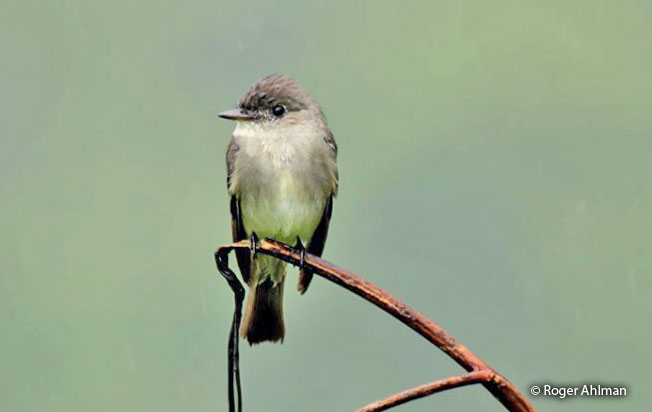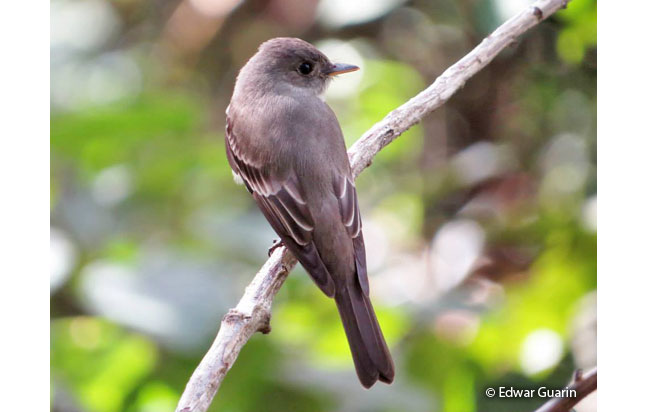Order: Passeriformes | Family: Tyrannidae | IUCN Status: Least Concern

Age: Adult | Sex: Unknown | Loc. North America

Age: Adult | Sex: Unknown | Loc. Orellana, Ecuador

Age: Adult | Sex: Unknown | Loc. Costa Rica

Age: Adult | Sex: Unknown | Loc.Eastern Andes, Colombia
Status: The Western Wood-Pewee is uncommon in montane forests of the east slope of the Andes at elevations ranging between 600-1800 m. It is expected in Peru during the months of September through April. The Western Wood-Pewee also occurs in Co, Ec, and Bo.
Name in Spanish: Pibí Occidental.
Sub-species: Western Wood-Pewee (Contopus sordidulus sordidulus), P. L. Sclater, 1859.
Meaning of Name: Contopus: Gr. kontos= pole, shaft and pous, podos= foot. sordidulus: L. sordidus= dirty, sordidulus= somewhat dirty, shabby..
 Voice
VoiceReferences:
-
- Species range based on: Schulenberg, T. S., D. F. Stotz, and L. Rico. 2006. Distribution maps of the birds of Peru, version 1.0. Environment, Culture & Conservation (ECCo). The Field Museum. http://fm2.fieldmuseum.org/uw_test/birdsofperu on 03/01/2017.